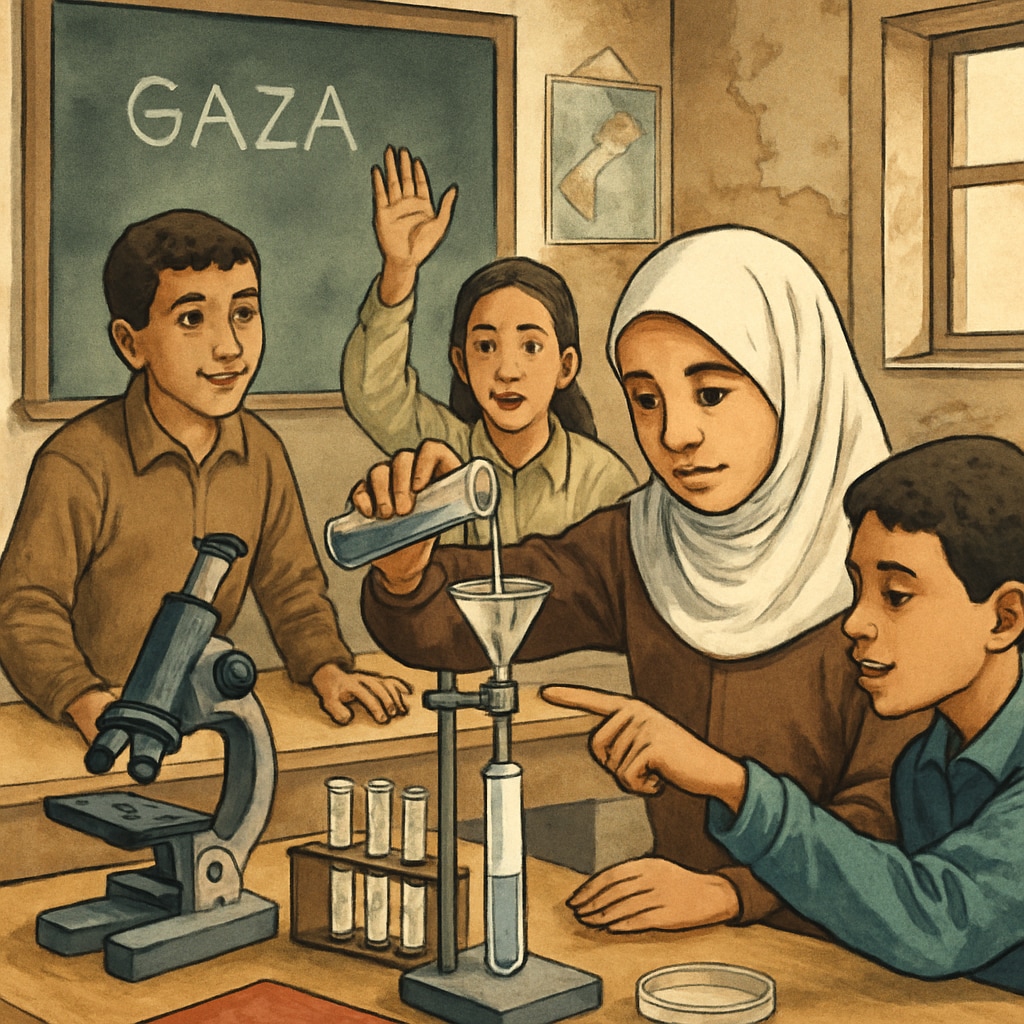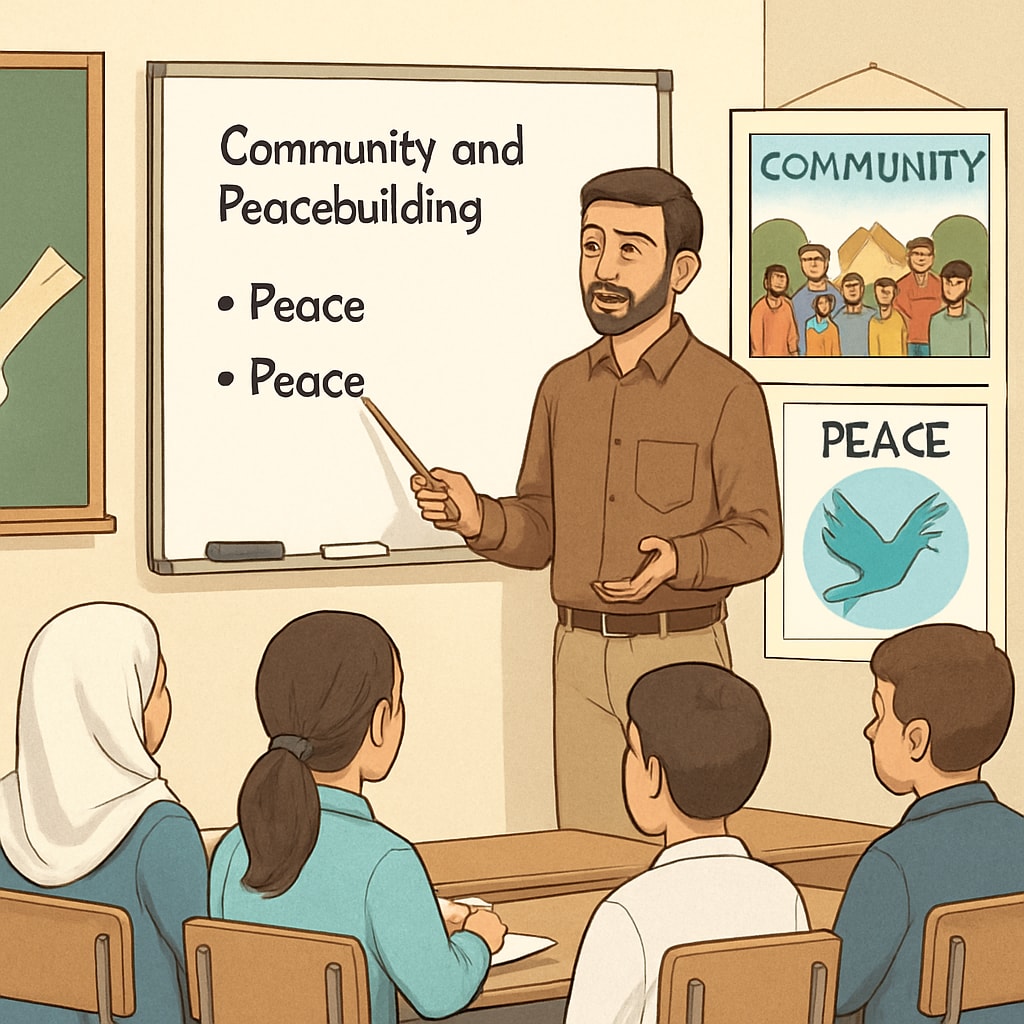The creation of a science and social studies curriculum for new schools in Gaza presents both a profound challenge and an opportunity for transformative change. In post-conflict regions, like those under Israeli control in Gaza, the development of educational frameworks must address not only academic needs but also the broader goals of peacebuilding and critical thinking. This article delves into the complexities of designing curricula tailored to this unique context and offers strategies for fostering hope through education.
Understanding the Context: Challenges in Curriculum Design for Gaza Schools
Designing a curriculum for schools in Gaza requires an in-depth understanding of the region’s social, cultural, and political dynamics. The long-standing conflict has left its mark on the educational infrastructure, resulting in inadequate resources, disrupted schooling, and a generation of students who have grown up amidst turmoil. A curriculum that ignores these realities risks being irrelevant or counterproductive.
Key challenges include:
- Resource limitations: Many schools lack basic materials, such as textbooks and laboratory equipment.
- Psychosocial impact: Students may have experienced trauma, which can affect their ability to focus and learn.
- Need for neutrality: In a politically sensitive environment, ensuring that the curriculum remains unbiased is critical.
In addition, science and social studies subjects must be framed in a way that encourages critical thinking and analytical skills, rather than rote memorization. This approach is particularly important for fostering an understanding of complex issues and promoting peaceful coexistence.

Strategies for Developing Science and Social Studies Curricula
To address these challenges, educators and policymakers must adopt innovative and context-sensitive approaches to curriculum development. Below are several strategies that can serve as a foundation for creating effective science and social studies programs:
1. Integrating Local Context
Incorporating examples and case studies relevant to Gaza’s environment and history can make lessons more relatable and engaging. For instance, in science education, topics such as water scarcity and renewable energy can be tied to local challenges. Similarly, social studies can explore themes of community resilience and the role of diplomacy in conflict resolution.
2. Promoting Peace and Critical Thinking
Education in post-conflict zones should aim to bridge divides rather than deepen them. Social studies curricula can include lessons on intercultural understanding, conflict resolution, and the importance of dialogue. Science education, on the other hand, can foster collaboration through group projects and experiments, teaching students the value of teamwork and shared goals.
3. Leveraging Technology
While resources may be scarce, technology can play a pivotal role in bridging gaps. Online educational platforms and open-source materials can provide access to quality content. For example, virtual labs can offer students the opportunity to conduct experiments even in the absence of physical laboratory facilities.
4. Building Teacher Capacity
A well-designed curriculum is only as effective as the educators who deliver it. Investing in teacher training programs that focus on pedagogy, trauma-informed teaching, and subject expertise is essential. Teachers should also be equipped to handle sensitive topics with care and objectivity.

Looking Ahead: A Framework for Hope
Rebuilding education in Gaza is not just about constructing schools but also about instilling hope and resilience in students. A well-rounded curriculum that balances academic rigor with emotional and social development can lay the foundation for a brighter future. Collaboration between local educators, international organizations, and policymakers will be key to achieving this goal.
As a result, the science and social studies curricula for Gaza schools must go beyond traditional academic objectives. They should aim to equip students with the skills and knowledge needed to navigate a complex world, contribute to their communities, and become advocates for peace. By addressing both the immediate and long-term needs of students, education can become a powerful tool for rebuilding hope in Gaza.
Readability guidance: The article uses short paragraphs and clear subheadings to enhance readability. Lists and examples are included to break down complex ideas, and transitions ensure smooth flow between sections. Active voice is prioritized, and technical terms are explained for accessibility.


